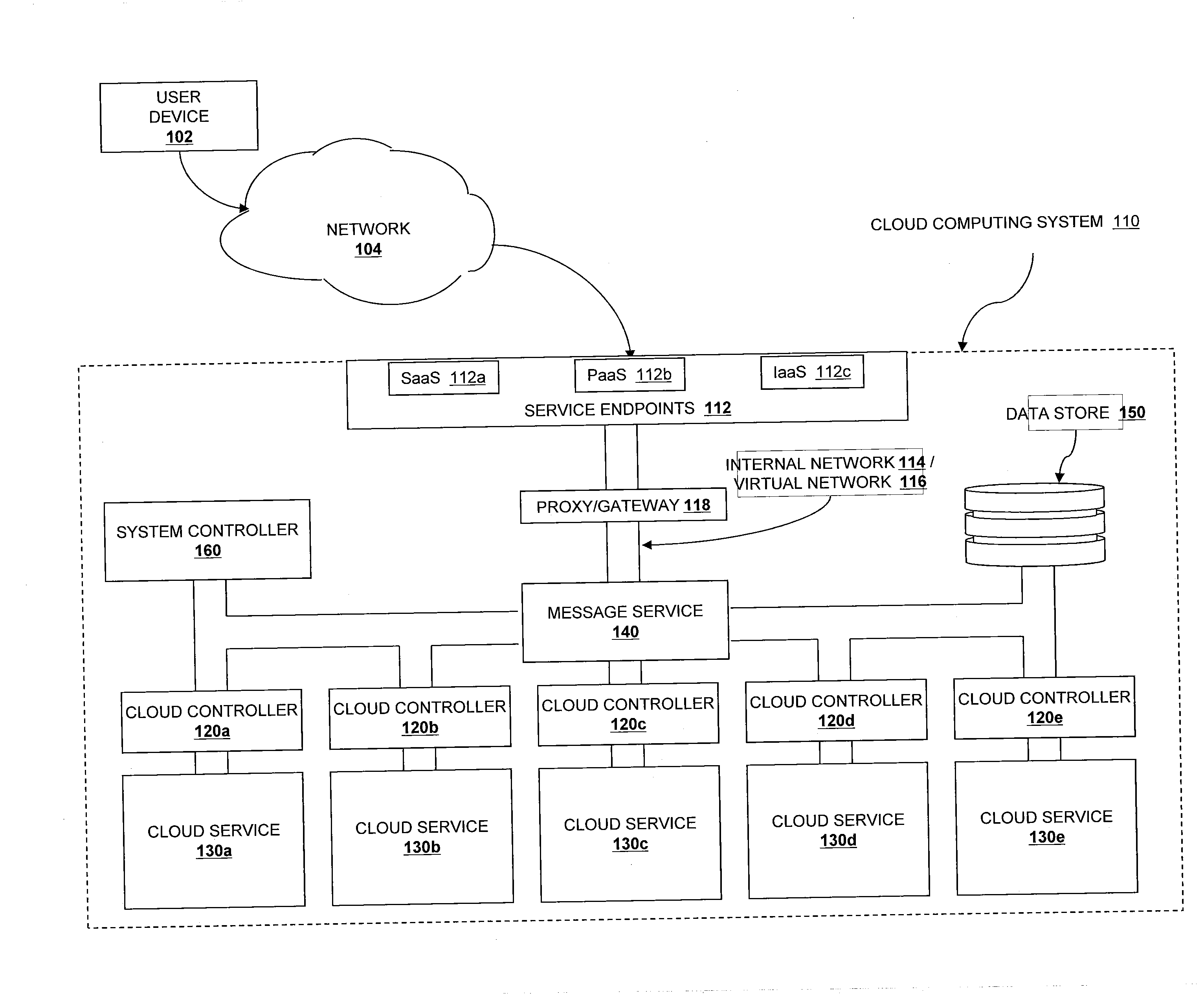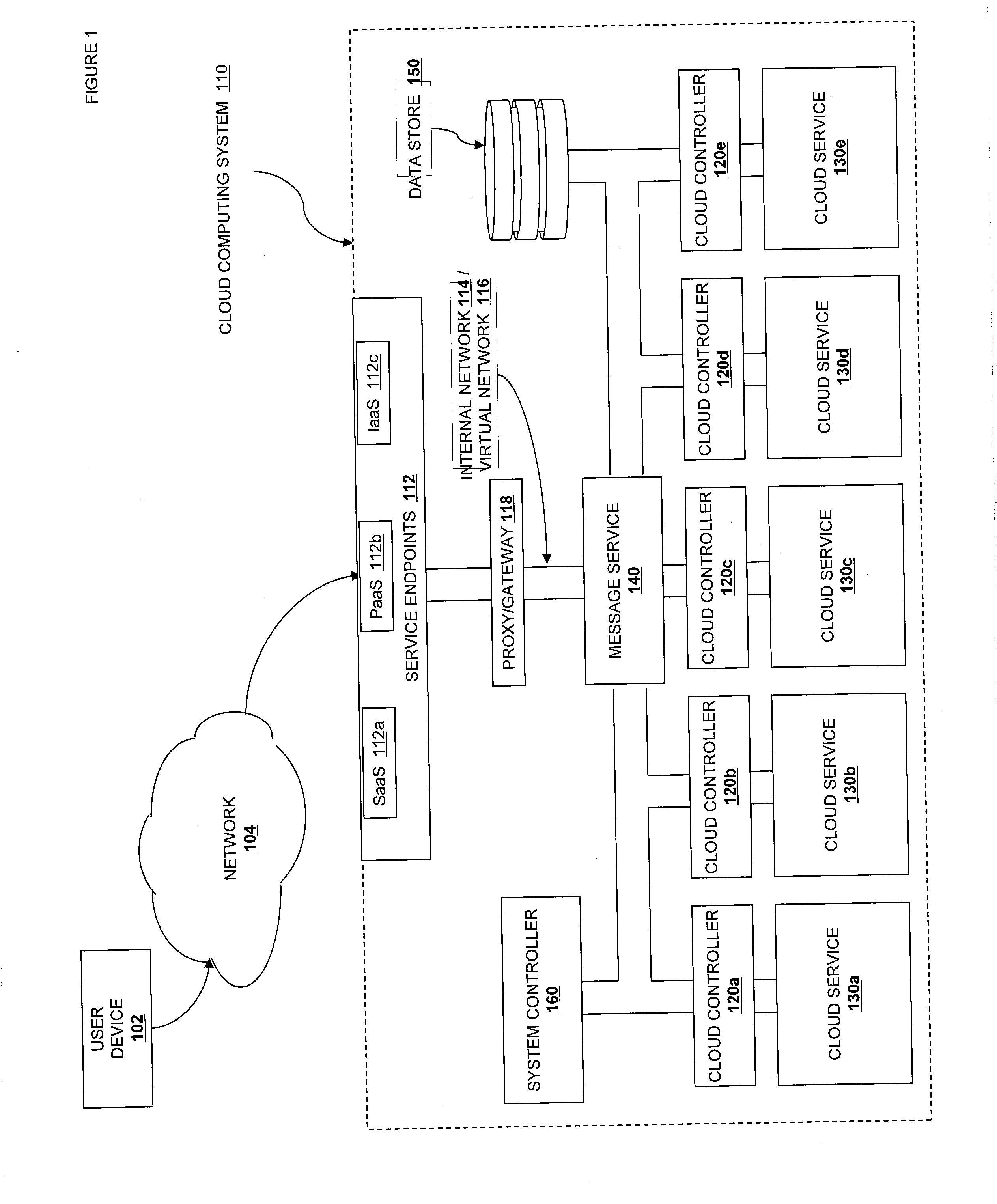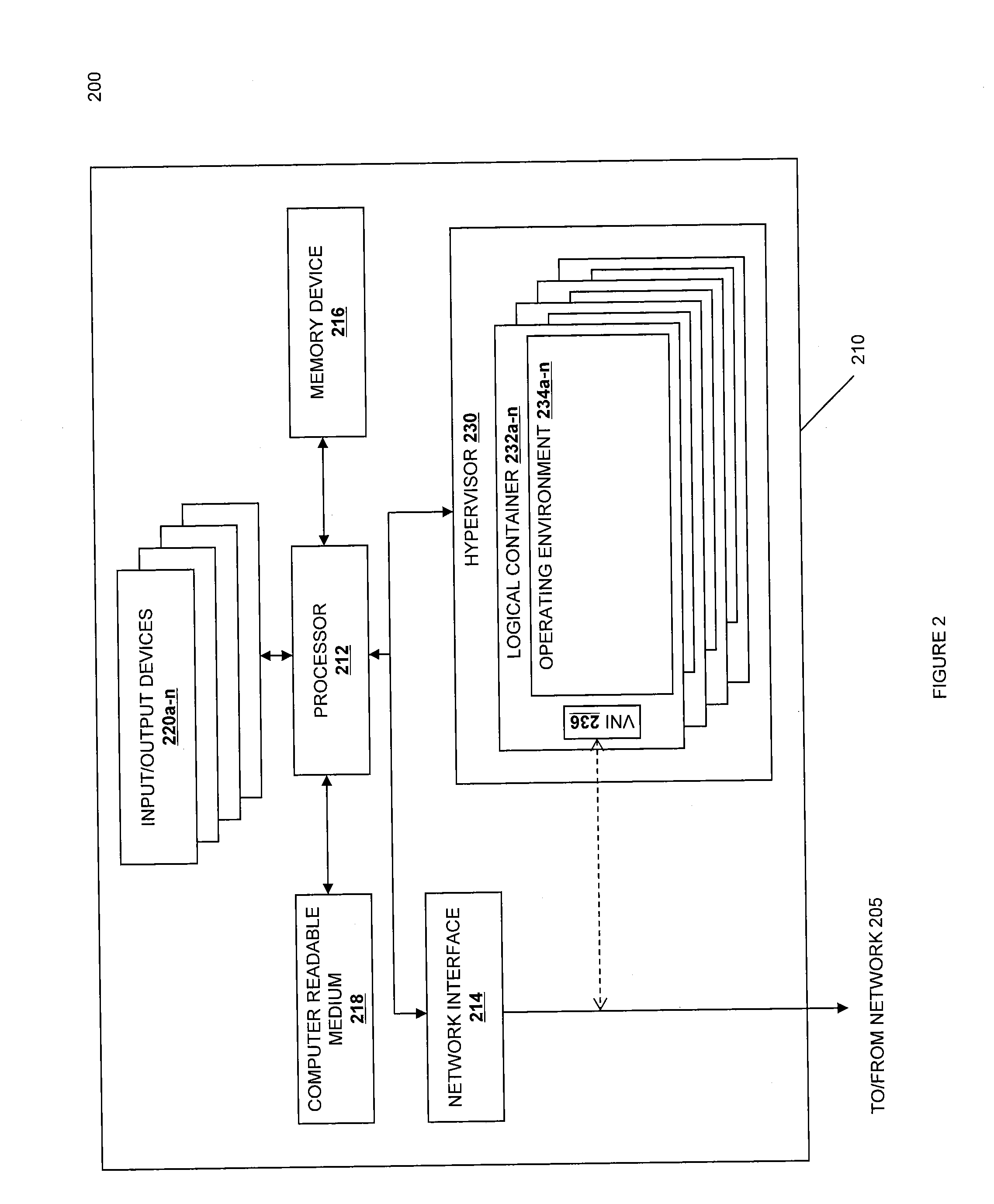Method and System for Identity-Based Authentication of Virtual Machines
a virtual machine and identity-based authentication technology, applied in the field of cloud computing, can solve the problems of inherently insecure security of newly instantiated virtual machine instances, inability to embed login credentials in images, and inability to meet the needs of users,
- Summary
- Abstract
- Description
- Claims
- Application Information
AI Technical Summary
Benefits of technology
Problems solved by technology
Method used
Image
Examples
second embodiment
[0049]The cluster controller 318 is outside the cluster, and is used to store or provide identifying information associated with the different addressable elements in the cluster—specifically the cluster generally (addressable as the cluster monitor 314), the cluster network router (addressable as the network routing element 316), each information processing system 310, and with each information processing system the associated logical containers 232 and operating environments 234. In one embodiment, the cluster controller 318 includes a registry of VM information 319. In a second embodiment, the registry 319 is associated with but not included in the cluster controller 318.
[0050]In one embodiment, the cluster also includes one or more instruction processors 320. In the embodiment shown, the instruction processor is located in the hypervisor, but it is also contemplated to locate an instruction processor within an active VM or at a cluster level, for example in a piece of machinery ...
third embodiment
[0149]In one embodiment, the API server 610 includes external API endpoints 612. In one embodiment, the external API endpoints 612 are provided over an RPC-style system, such as CORBA, DCE / COM, SOAP, or XML-RPC. These follow the calling structure and conventions defined in their respective standards. In another embodiment, the external API endpoints 612 are basic HTTP web services following a REST pattern and identifiable via URL. Requests to read a value from a resource are mapped to HTTP GETs, requests to create resources are mapped to HTTP PUTs, requests to update values associated with a resource are mapped to HTTP POSTs, and requests to delete resources are mapped to HTTP DELETEs. In some embodiments, other REST-style verbs are also available, such as the ones associated with WebDay. In a third embodiment, the API endpoints 612 are provided via internal function calls, IPC, or a shared memory mechanism. Regardless of how the API is presented, the external API endpoints 612 are ...
PUM
 Login to View More
Login to View More Abstract
Description
Claims
Application Information
 Login to View More
Login to View More - R&D
- Intellectual Property
- Life Sciences
- Materials
- Tech Scout
- Unparalleled Data Quality
- Higher Quality Content
- 60% Fewer Hallucinations
Browse by: Latest US Patents, China's latest patents, Technical Efficacy Thesaurus, Application Domain, Technology Topic, Popular Technical Reports.
© 2025 PatSnap. All rights reserved.Legal|Privacy policy|Modern Slavery Act Transparency Statement|Sitemap|About US| Contact US: help@patsnap.com



